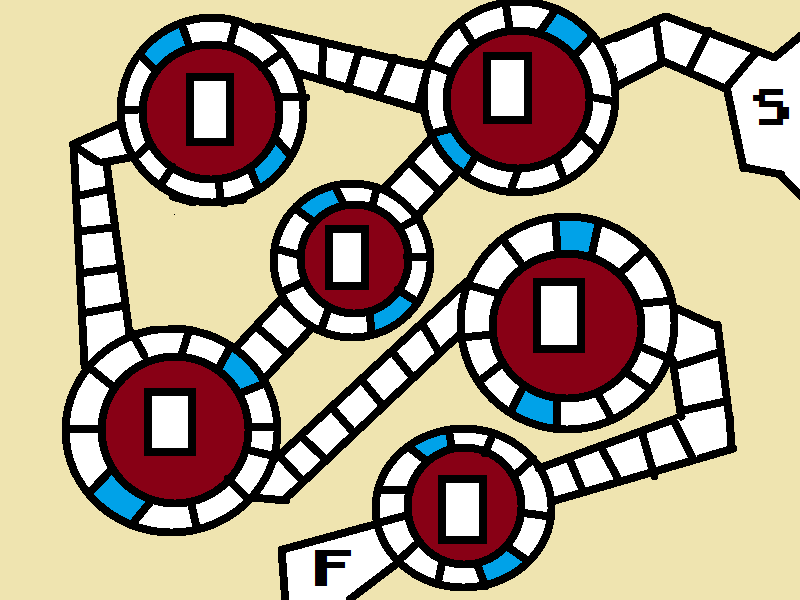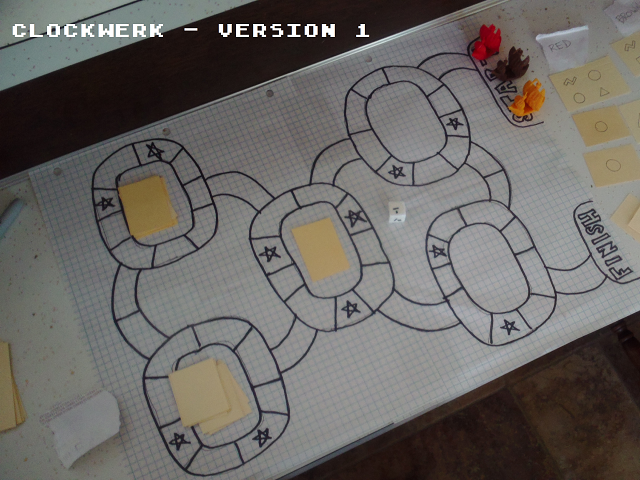Level 2: Iteration & Rapid Prototyping (ALL)
For this week:
Iteration & Rapid Prototyping
Take that 15-minute game you made last time, and play it, if you haven’t already. As you are playing, ask yourself: is this more fun or less fun than playing your favorite published games? Why? What could you change about your game to make it better? but only for as long as it takes you to get the overall feeling of what it is like to play.
Feel free to post thoughts on your own process through this week's exercise in this thread.Then, after playing once, make at least one change. Maybe you’ll change the rules for movement, or add a new way for players to interact. Maybe you’ll change some of the spaces on the board. Whatever you do, for whatever reason, make a change and then play again. Note the differences. Has the change made the game better, or worse? Has this one change made you think of additional changes you could make? If the game got worse, would you just change the rule back, or would you change it again in a different way?
Have fun!!!





I playtested and revised my game concept Clockwerk. The general idea is that the players had to collect a set of components for a machine before leaving the course, which was comprised of a series of interlinked circular paths that would rotate from round to round. Here's the original concept sketch:

Here's the first iteration of the game board:
When compared to the original concept sketch, I ended up adjusting some of the paths to streamline and add symmetry to the game board. Also, landing on a "star" meant a player would collect a card from that round path's draw pile. If there were no cards left in the draw pile, then they would draw no card.
There were four different resources in the game, and 10 of each were shuffled and spread throughout each round path's draw pile. At the start of the game, each player was given a "blueprint" card that detailed their required set of four resources. They would need to collect these resources before moving to the FINISH at the end of the path.
GAME SUMMARY:
I carried out solo playtests while simulating a game between three players. Here's a summary of changes made after each playthrough.
GAME 1
The general mechanics worked satisfactorily. However, I noticed that there were plenty of cards leftover in a player's hand by the time the endgame rolled around. I revised the game as follows:
GAME 2
Things were tighter and much more active this time around. I continued to tweak the game slightly, and added incentive to stay on the round paths:
GAME 3
I was pleased with the game's progress, and wanted to encourage players to keep moving across the board and attempting to collect resources before they were forced to pay tolls, either on empty round paths or on the endgame bridge.
GAME 4/CONCLUSION
The toll bridges incentivized players staying on the round paths, resulting in lots of player attention paid while it wasn't their turn (reducing down-time) and making the extra cards worth collecting and hanging on to even if they weren't part of the set required by the player's goal card.
There were still some situations where players would have extra cards that didn't match up with their goal card, and I didn't have a ready solution for this. If I were to continue tweaking the game, I would add a sideboard of one-use special abilities players could purchase with their surplus cards: force an opponent to discard, search draw piles for a desired resource, etc. This would help players with bad luck in the card draws still be involved in the game and help them catch up to other players who may already have their required components.